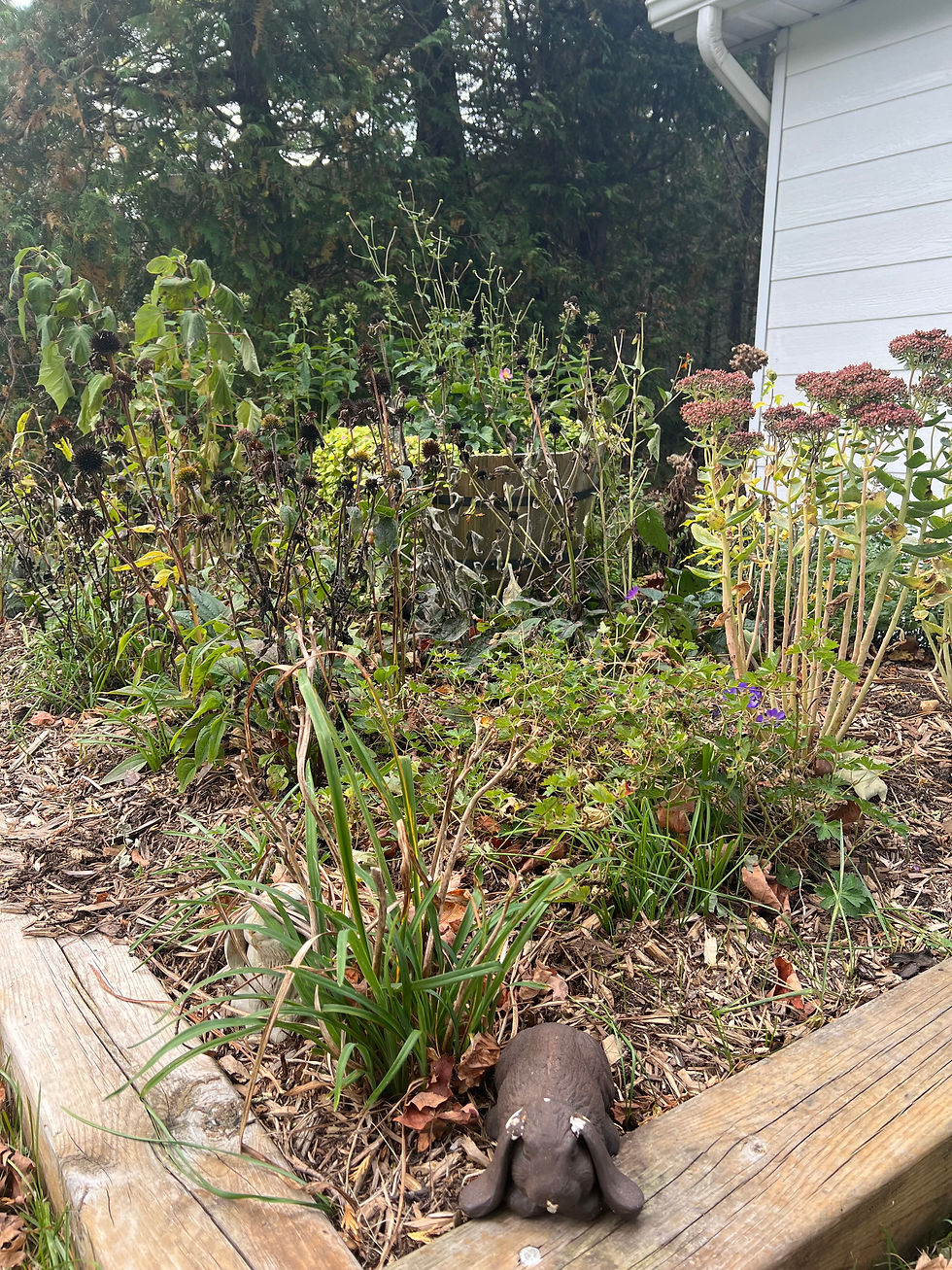Winterizing Your Garden in Southern Ontario: Tips to Prepare for the Cold Months
- Paige

- Oct 9, 2024
- 3 min read
Updated: Oct 12, 2024
As the vibrant colours of summer begin to fade and temperatures start to dip in Southern Ontario, it’s time to think about preparing your garden for the winter months. Winterizing your garden not only protects your plants from frost damage but also sets the stage for a thriving garden come spring. Here are some essential tips to help you get your garden ready for winter.
1. Clean Up Garden Beds
A good garden clean-up is the first step in winter preparation. Remove any dead or decaying plants, which can harbor pests or diseases over winter. If your garden contains annuals, now is the time to pull them out. However, if you’ve been growing native plants or perennials, leave some stems and seed heads intact. These provide food and shelter for overwintering pollinators and other beneficial insects.
2. Mulch, Mulch, Mulch!
Mulching is one of the best ways to protect your garden from the harsh Ontario winter. A thick layer of organic mulch—such as shredded leaves, straw, or wood chips—helps insulate the soil, regulate moisture levels, and prevent frost heaving, which can damage plant roots. Spread 2-4 inches of mulch around the base of your plants, particularly perennials, shrubs, and trees, to protect them from the freezing and thawing cycles.
3. Protect Sensitive Plants
Some tender perennials, such as lavender, roses, and young shrubs, need extra care to survive the winter. Wrap the base of these plants with burlap or cover them with a protective plant cover to shield them from cold winds and extreme temperatures. You can also mound soil or mulch around the base of the plants to add an extra layer of insulation.
4. Water Before the Ground Freezes
Before the ground freezes, make sure your garden is well-watered. Plants that enter winter with adequate moisture in the soil are less prone to damage from freezing. Watering deeply in the late fall ensures that the roots of your perennials, shrubs, and trees are hydrated enough to get through the cold season.
5. Cut Back, But Not Too Much
While it’s tempting to cut everything back, it’s important to strike a balance. Perennials like grasses and plants with hollow stems (such as coneflowers) can provide winter habitat for beneficial insects like solitary bees, so leave them standing until spring. You can prune shrubs and trees once they enter dormancy, but leave major pruning for late winter or early spring to avoid stimulating new growth.
6. Plant Spring Bulbs
Fall is the perfect time to plant spring-flowering bulbs like tulips, daffodils, and crocuses. Bulbs need the cold of winter to bloom properly, so get them in the ground before it freezes. Plant them at the recommended depth, and consider adding a layer of mulch on top for added insulation. By spring, your garden will be alive with early bursts of color.
7. Compost and Feed the Soil
Winter is an ideal time to enrich your garden soil by adding compost, manure, or leaf mulch. This organic matter will break down over the winter months, improving the soil structure and adding nutrients for your plants to draw from next growing season. Avoid chemical fertilizers in the fall, as they can encourage new growth that is easily damaged by frost.
8. Consider Winter Pollinators
If you’re passionate about pollinators, think about what your garden can offer them in the colder months. Leave stems, seed heads, and leaf piles intact for insects to overwinter. Additionally, installing bee hotels or leaving hollow plant stems can provide shelter for native bees. A winter garden doesn’t have to be barren—it can still support wildlife even






Comments